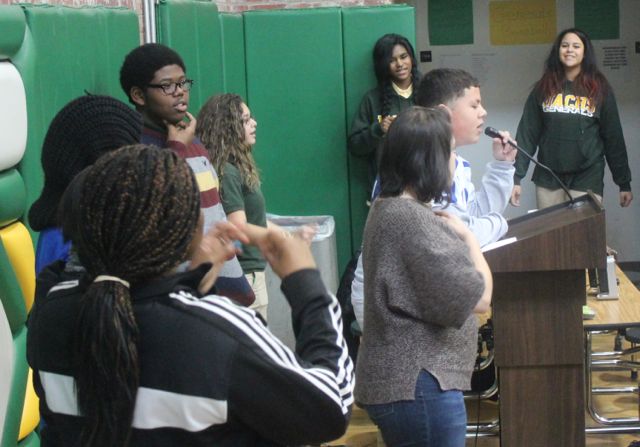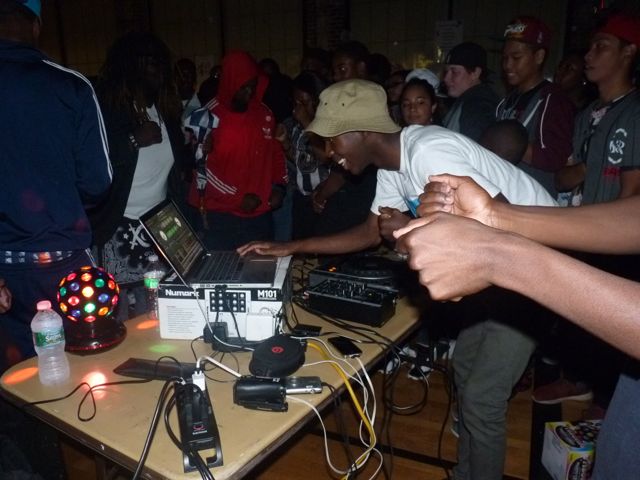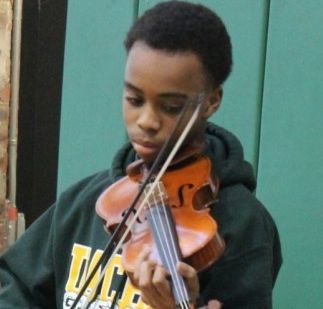According to gym teachers Joshua Aronowitz and Nicholas Morris, there are two reasons why the school’s gym is based on participation and not fitness: the school’s lack of facilities and the students’ resistance to fitness activities.
Students’ gym class grades are based on wearing proper gym attire and participating in an activity.
Physical education teacher Nicholas Morris, who has worked at the school for six years, said that years ago they tried to conduct a gym class more geared to fitness, but it was not effective.
“Instead of working out, students would just choose not to participate all together,” Morris said. “We use the college facilities, and if the school sees kids sitting around, [they] think kids are going to be writing on the walls.”
Vingie Magdael, a senior at McNair Academic, said that gym teachers grade students on different things at McNair.
“They grade on how much effort you put into the workouts and running, also if you participate in the activity or sport,” he said.
Aronowitz, who has worked at the school for three years, said that the exercises in the current curriculum would be all right if the students actually participated in them. Aronowitz also said that if we were to have new exercises, students would fight against them.
“[Students] would have a rebellious attitude towards doing new exercises,” he said.
Senior Ryin Stanberry said that if students do not want to participate in gym activities, the gym teachers do not push them to exercise. Stanberry also said that she would welcome a more rigorous gym class.
“I think gym would be more interesting,” Stanberry said.
Morris said that the lack of space to hold equipment at the college gym, as well as NJCU not allowing students to use the upstairs track, contribute to the lack of fitness activities.
“We really don’t have a lot of space to keep equipment such as yoga mats and steps, and the college doesn’t let us use their equipment,” Morris said. “Our volleyball net is in bad shape, and [the college] doesn’t us want to use the metal one because it might scratch their floors.”
Magdael said that in gym at McNair, they may run up to three laps to warm up and then play a group sport. Magdael also said that they have a weight room in their gym.
“The weight room is where can we lift weights, use the exercise bikes or use any of the other machines,” he said. “There is also equipment for the sports we play such as volleyballs, basketballs, hula hoops, cones [and] soccer balls.”
Aronowitz said that the school should have more equipment so students will have more activities to do and can get more involved during gym class.
“We need more equipment such as volleyball standards and more access to the track, maybe even the pool and the weight room,” he said.
The lack of gym equipment in both charter and private schools may be tied to limited funds overall.
Charter schools receive a less funding than non-charter public schools. According to the School Funding Reform Act of 2008, charter schools are supposed to receive 90 percent of the amount per student that district public schools get. However, the actual funding charter schools receive is about 78 percent, according to Jessani Gordon, executive director of the New Jersey Charter Public Schools Association, in an editorial on NJ.com. Under the new school-funding formula, some charter schools are getting funded at less than 65 percent per student.
Private schools like Hudson Catholic High School also have limited funds for physical education because they receive no support from the government. Hudson Catholic gets its funding for gym equipment from tuition and alumni donations, according to business manager Frank Becht.
“Only about $500-$1000 goes into equipment for physical education classes each year,” Becht said.
Sophomore Zine Anciado, who attended Hudson Catholic High School last year, said that the gym class at Hudson Catholic was easy. He also said that the students were allowed to play sports such as volleyball or basketball until the period ended.
“It was pretty laid-back,” Anciado said. “We really didn’t do a lot, and [the teacher] didn’t even watch over us.”
Freshman Kiana Lambert, who used to attend Snyder High School, a public high school located in Jersey City, said that the gym classes there are much more difficult than those at UACHS.
“For Snyder, you have to run a lap around, then go to an activity afterwards,” Lambert said.
Magdael said that the difficulty of gym at McNair depends on the teacher.
“Some teacher’s will work the student hard while others will make them do whatever they want,” Magdael said.
Morris said that the gym teachers may rethink adding more fitness activities to the curriculum next year. Compared to those the gym teachers tried to do fitness with six years ago, today’s students are more “grade-conscious,” he said.
Categories:
Lack of gym equipment undermines fitness
March 3, 2011
Story continues below advertisement
0




